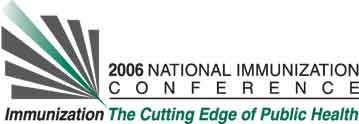Stephanie L. Coleman, Center for Rochester's Health, University of Rochester, 111 Westfall Rd, Rochester, NY, USA, John M. Fontanesi, Partnership of Immunization Providers, Community Pediatrics, UC San Diego, 9500 Gilman Drive, MC 0927, La Jolla, CA, USA, and Christine E. Long, Center for Rochester's Health, University of Rochester School of Medicine and Dentistry, 601 Elmwood Avenue, Box 689, Rochester, NY, USA.
Learning Objectives for this Presentation:
By the end of this presentation participants will be able to:
1. Identify the average amount of time providers spend discussing immunizations with patients.
2. Be more aware of the discrepancy between patients' and providers' understanding of immunizations and the vaccine information methods used in primary care.
Background:
There is a concern regarding a lack of appreciation of the importance that patients have regarding immunization due to decreased awareness of prevented diseases. Though providers are required to give patient's a Vaccine Information Sheet (VIS) this study will examine whether this important information is being communicated to patients effectively.
Objectives:
To present a possible reason for patient unawareness regarding immunizations.
Methods:
Timed work-flow observations (N=91) during patient primary care visits.
Results:
Immunizations and vaccine information sheets were provided by nurses, not doctors. 85% of the time that an immunization was given (N=11), a VIS was distributed to the patient or the parent of the patient. The average time the nurse spent in the room with the patient when administering the vaccine was 3.2 minutes. After patients left the exam room and were asked which immunization they or their child received; very few knew the name and had to consult their VIS to identify it.
Conclusions:
Patients have their own beliefs about their health and their susceptibility to disease and there is a need for better communication in order to increase patients' pro-active attitudes toward immunization health. VIS distribution and the time spent discussing them, may be inadequate to communicate complex information regarding immunizations and their utility and the consequences of lack of vaccination. Our methods did not allow observations into the exam room, but the patients' lack of knowledge suggests that the information they were provided was not sufficient to engage patients.
See more of Posters
See more of The 40th National Immunization Conference (NIC)

